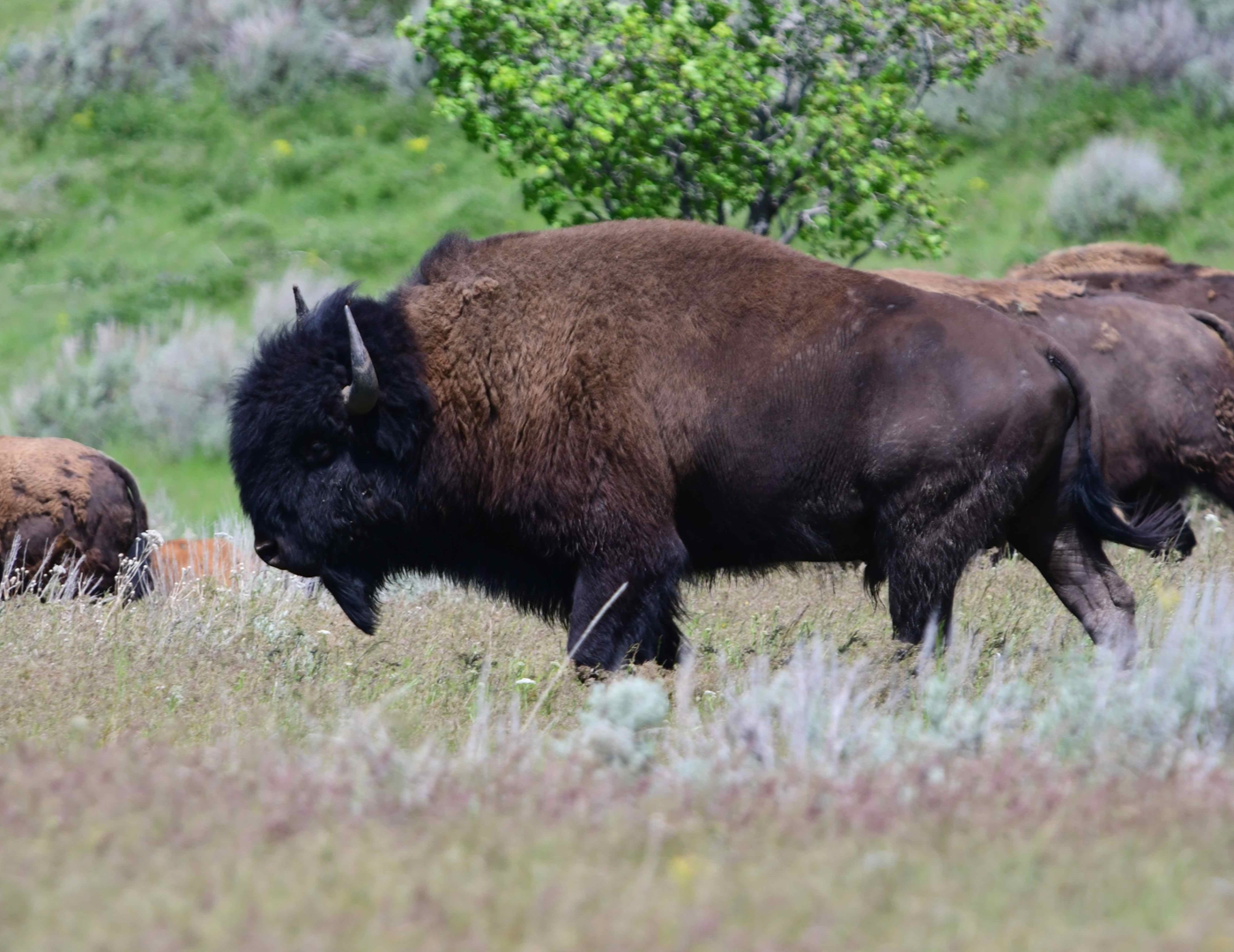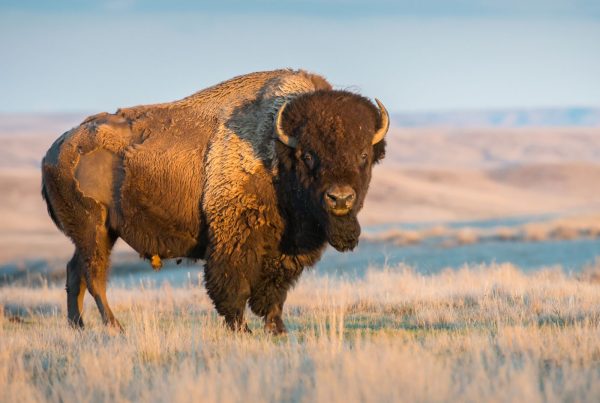For being one of the most iconic wild animals in Western America, the bison population has had a complicated history. Across the Great Plains of the United States, an estimated 15 million bison roamed free during the Civil War. However, after a long period of extensive bison hunting in the 1880s, their numbers whittled to near extinction.
Thankfully, through extensive conservation, the bison population has rebounded. Currently, an estimated 20,500 bison live in conservation herds, with an additional 420,000 in commercial herds. In other words, bison hunting is back on the table, and if you’re in the right spot with the right tools, spotting one of these mighty beasts is easier than ever.
Spot Utah bison at West Canyon Ranch
With over 4,000 acres to explore, West Canyon Ranch is a phenomenal place for bison hunting. Our expansive ranch is home to trophy bison that weigh up to 2,000 pounds. As the largest mammal in North America, bison are characterized by their large, dark brown bodies and massive heads with short, sharp horns that curve upward. The front of their body is covered with thick, long dark brown hair, while the rear is covered with short, lighter-colored hair. Want to see some of the bison that roam West Canyon Ranch? Take a look at our Instagram where we feature many of these beautiful animals.
Research their habitat
To spot bison, you’ll need to do some research first. As grazing herbivores, bison can be found on prairies, plains, and river valleys. You’ll find them foraging for grasses, leafy plants, and weeds up to 11 hours a day. Even in the winter, the long hours of grazing continue. Because of their powerful shoulder hump, bison can push through deep snow to reach the grass underneath. Bison greatly benefit local ecosystems in several ways, but their effect on damaged land is the most significant. Bison are commonly attracted to areas recently affected by a wildfire, and they help to reestablish the growth of plants and grasses.
Visit national parks and wildlife reserves
The best place to spot wild bison is in national parks and wildlife reserves across America. Many people visit Yellowstone National Park to see the descendants of the world’s oldest bison herd. Since prehistoric times, the Yellowstone herd has roamed the land, making it the only place in the United States where bison have continuously roamed. Yellowstone is also home to the nation’s largest bison population on public land, with less than 6,000 animals.
More Bison-Spotting Destinations
- Custer State Park in South Dakota
- Wichita Mountains Wildlife Refuge in Oklahoma
- Wind Cave National Park in South Dakota
- Antelope Island in Utah
Wildlife reserves across the country are also home to bison herds–just search for the closest herd near you.
Look for signs of bison
Bison leave behind a few signs to watch for that signify their presence. Here are just a few signs to watch for:
- Bison Tracks– Imagine the imprint of two fat bananas facing each other–that is one way to describe the tracks of bison. The track as a whole is a circular shape and is about 4.5 to 5 inches in size.
- Scat – Bison scat, also commonly called buffalo chips, are large, round fibrous piles of droppings. They often dry out and become more pale as they age. Bison scat is so large and full of plant matter that Native Americans and early settlers used them for anything from incense to fuel for a fire.
- Wallows – These bowl-like depressions in the earth are full of dirt with very little plant matter. Bison roll around in these wallows in what’s known as a “dust bath,” a practice that helps keep insects away.
- Ruts – These well-worn trails where bison have walked can help lead you to the herd. Also, look for signs of rubbing and wear and tear on trees, as bison prefer to rub against trees or boulders as relief from insects.
Stay quiet, be patient, and use binoculars
Similarly to searching for any other type of wildlife, it’s essential to be as quiet as possible. While bison may not have the most excellent eyesight, their sense of hearing and smell is exceptional. Stay downwind, keep quiet, and use your binoculars. Patience is also essential: find a good spot that you think the bison will frequent, get comfortable, and wait for your opportunity to spot them.
Be safe
Bison are a force to be reckoned with, so it’s important to know a few safety rules. First, be aware of your surroundings and always be watching for bison. Don’t hike where bison are present, and definitely don’t get within 25 yards of one. You’re too close if a bison shows signs of aggression, such as snorting, bobbing, or bluff charging.




